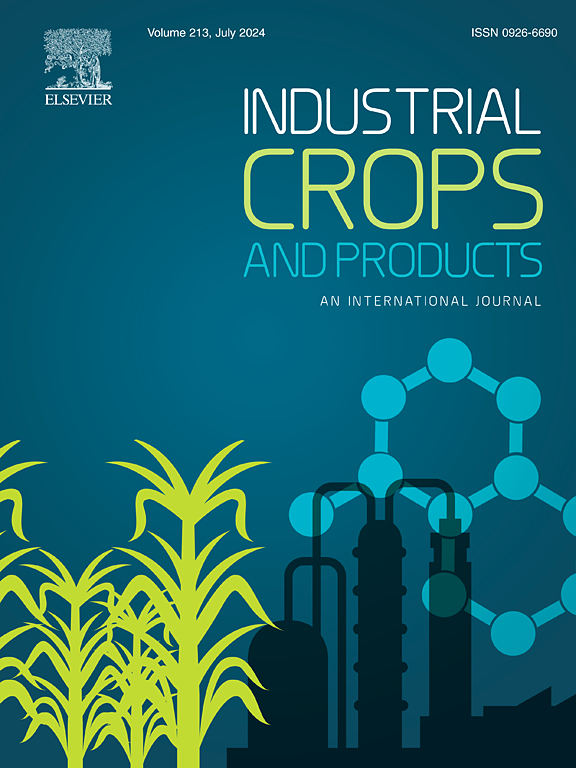Deep learning time-series prediction method for cotton nitrogen content based on small sample hyperspectral data
IF 5.6
1区 农林科学
Q1 AGRICULTURAL ENGINEERING
引用次数: 0
Abstract
Nitrogen, an essential nutrient for cotton growth, requires accurate and timely assessment for effective fertilizer application. Despite advances in sensing technology and models, traditional machine learning monitoring models exhibit limited accuracy in assessing nitrogen content. Agronomic sample collection is challenging, and small datasets are unsuitable for conventional deep learning (DL) methods. Moreover, monitoring at specific time points cannot capture dynamic nitrogen changes within the crop, and time lags in decision-making can lead to mismatches between nitrogen supply and crop demand. Therefore, improving monitoring accuracy with small agronomic samples and effectively predicting future nitrogen content changes are crucial. Here, we used a hyperspectral technology to collect data, focusing on “Xinluzao53” cotton and established four nitrogen concentration gradients. Approximately 30 days after emergence, we conducted destructive and non-destructive sampling of the main stem leaves at regular intervals. To train the monitoring model, destructive sampling involved collecting hyperspectral data, followed by leaf cutting for nitrogen determination, whereas non-destructive sampling involved collecting hyperspectral data over time without leaf damage. We then constructed DL monitoring models suitable for small samples to estimate nitrogen levels. The optimal monitoring model was applied to non-destructive sampling, and the resulting nitrogen content time-series was cleaned and used as input for prediction models. The one-dimensional convolutional neural network monitoring model developed in this study achieved optimal accuracy, and the improved ensemble time-series prediction models demonstrated better predictive performance than single time-series models. These findings offer valuable insights for monitoring phenotypic parameters with limited sample sizes and predicting future changes.
基于小样本高光谱数据的棉花氮含量深度学习时间序列预测方法
氮是棉花生长所必需的营养物质,需要准确、及时地进行氮肥评估,以便有效施肥。尽管传感技术和模型取得了进步,但传统的机器学习监测模型在评估氮含量方面的准确性有限。农艺样本收集具有挑战性,小数据集不适合传统的深度学习(DL)方法。此外,特定时间点的监测无法捕捉作物内部氮的动态变化,决策的时间滞后可能导致氮供应与作物需求不匹配。因此,提高小样本监测精度,有效预测未来氮含量变化至关重要。本研究以“新陆早53”棉花为研究对象,采用高光谱技术采集数据,建立了4个氮浓度梯度。出芽后约30天,我们定期对主茎叶进行破坏性和非破坏性取样。为了训练监测模型,破坏性采样包括收集高光谱数据,然后切割叶片以测定氮含量,而非破坏性采样包括在不损坏叶片的情况下收集高光谱数据。然后,我们构建了适合小样本的DL监测模型来估计氮水平。将最优监测模型应用于非破坏性采样,并将得到的氮含量时间序列进行清洗,作为预测模型的输入。本文建立的一维卷积神经网络监测模型达到了最优精度,改进的集合时间序列预测模型的预测性能优于单一时间序列模型。这些发现为监测有限样本量的表型参数和预测未来变化提供了有价值的见解。
本文章由计算机程序翻译,如有差异,请以英文原文为准。
求助全文
约1分钟内获得全文
求助全文
来源期刊

Industrial Crops and Products
农林科学-农业工程
CiteScore
9.50
自引率
8.50%
发文量
1518
审稿时长
43 days
期刊介绍:
Industrial Crops and Products is an International Journal publishing academic and industrial research on industrial (defined as non-food/non-feed) crops and products. Papers concern both crop-oriented and bio-based materials from crops-oriented research, and should be of interest to an international audience, hypothesis driven, and where comparisons are made statistics performed.
 求助内容:
求助内容: 应助结果提醒方式:
应助结果提醒方式:


